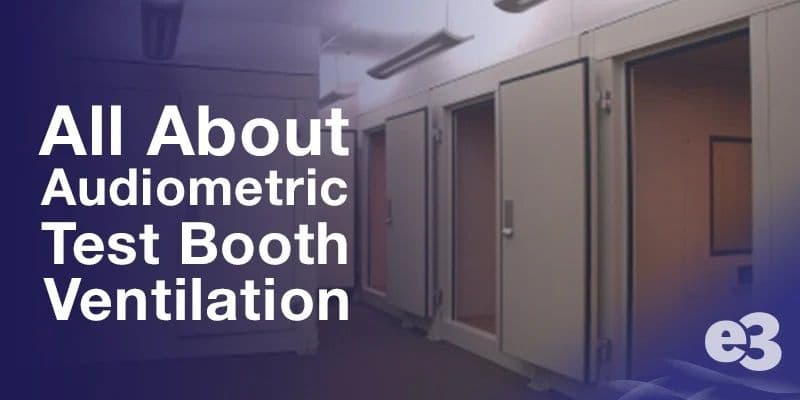All About Audiometric Test Booth Ventilation

To follow up on our previous blog post about audiometric booth sanitation, here is some more information on how to keep your audiometric booth or sound room properly ventilated.
Ensuring your audiometric booth is properly ventilated is of the utmost importance. Because it is an enclosed area, the air within an audiometric booth or sound room could become contaminated if an infected person were to be tested in it. Because of this, it’s generally recommended that there be 6 to 12 air exchanges per hour to ensure the air stays clean.
Here are some ventilation options for audiometric test booths:
Self-Ventilated with Fixed or Variable Speed Fan
Booths can be self-ventilated with a fixed-speed or variable-speed fan (depends upon the age and manufacturer) that will draw air and deliver into the booth from either the host room (assuming the space above the booth is not closed off from the rest of the host room) or an area above the booth if it is closed off from the host room.
- If the booth is not closed off, the conditioned air of the host room will be circulated into the booth.
- If the booth is closed off, the air being circulated into the booth may not be conditioned.
If the booth is equipped with a variable speed fan, then, in between patients, the fan speed should be set to maximum to reduce the amount of time necessary for a full air exchange. When testing, the fan speed should be set to minimum to reduce the ambient noise levels during audiometric testing for threshold.
Direct Connection to Building HVAC System
Another method to provide effective air circulation into a booth is by a direct connection via a piece of flexible duct to the building’s HVAC system. This is becoming more common and is the preferred method in most hospitals, universities, and other institutional settings.
- Air flow must be set appropriately in order to limit the level of ambient noise in order to test hearing to 0dB HL with ears uncovered (bone conduction and sound field testing)
- This is managed by outside HVAC contractors or facilities management services
Frequency of Air Exchanges
The bottom line is knowing how many air exchanges occur per hour. As we stated, that number for test booths is in the 6-12 range. On the low end of 6 per hour, that means every ten minutes new air is completely delivered and old air is completely removed from inside the booth. That may be the minimum amount of time in between patients to ensure a full air exchange. Also, keep in mind that it is key to keep the door closed in between patients.
